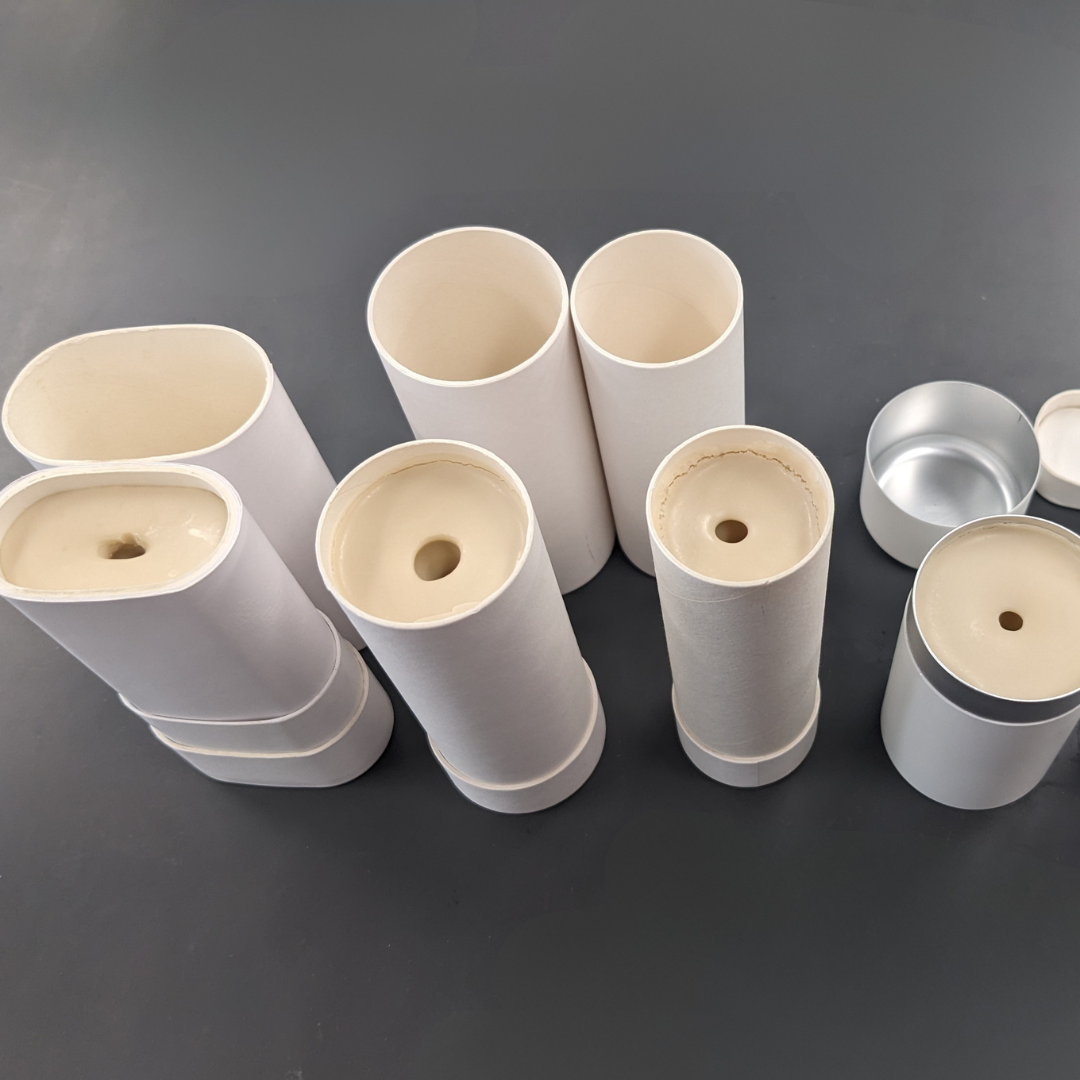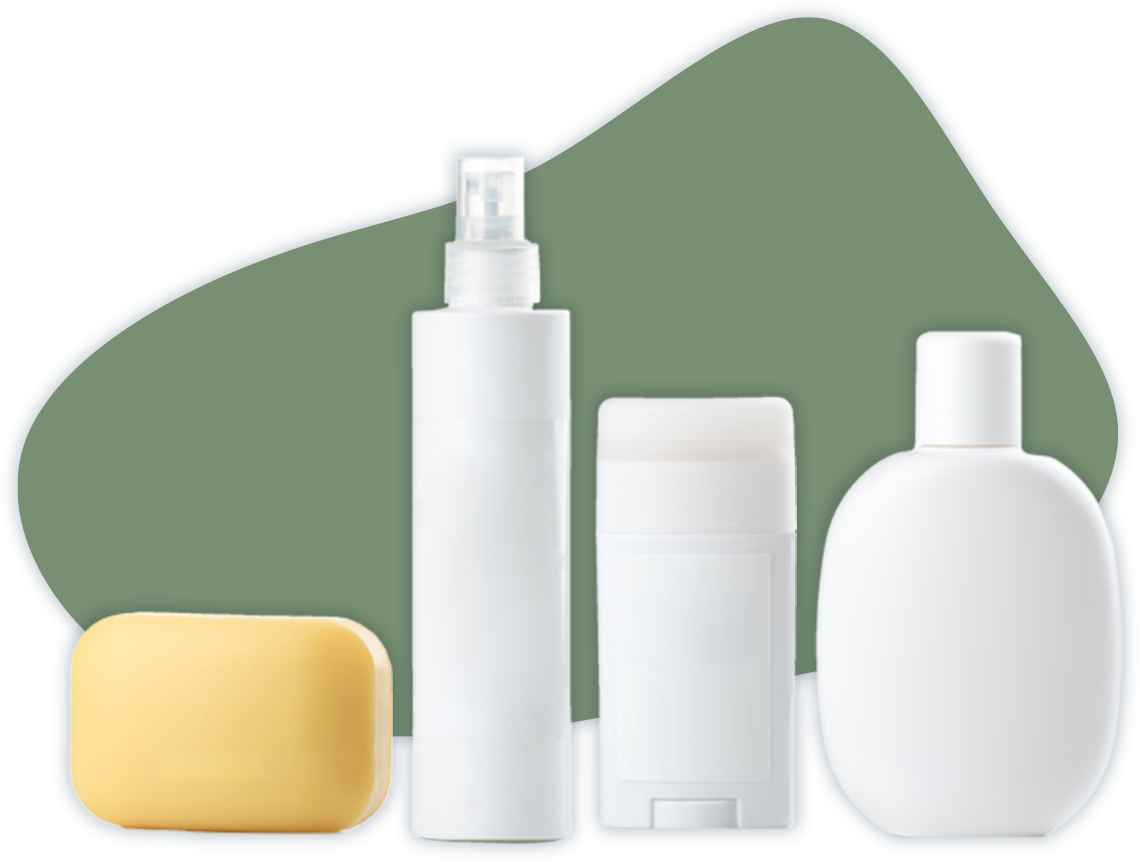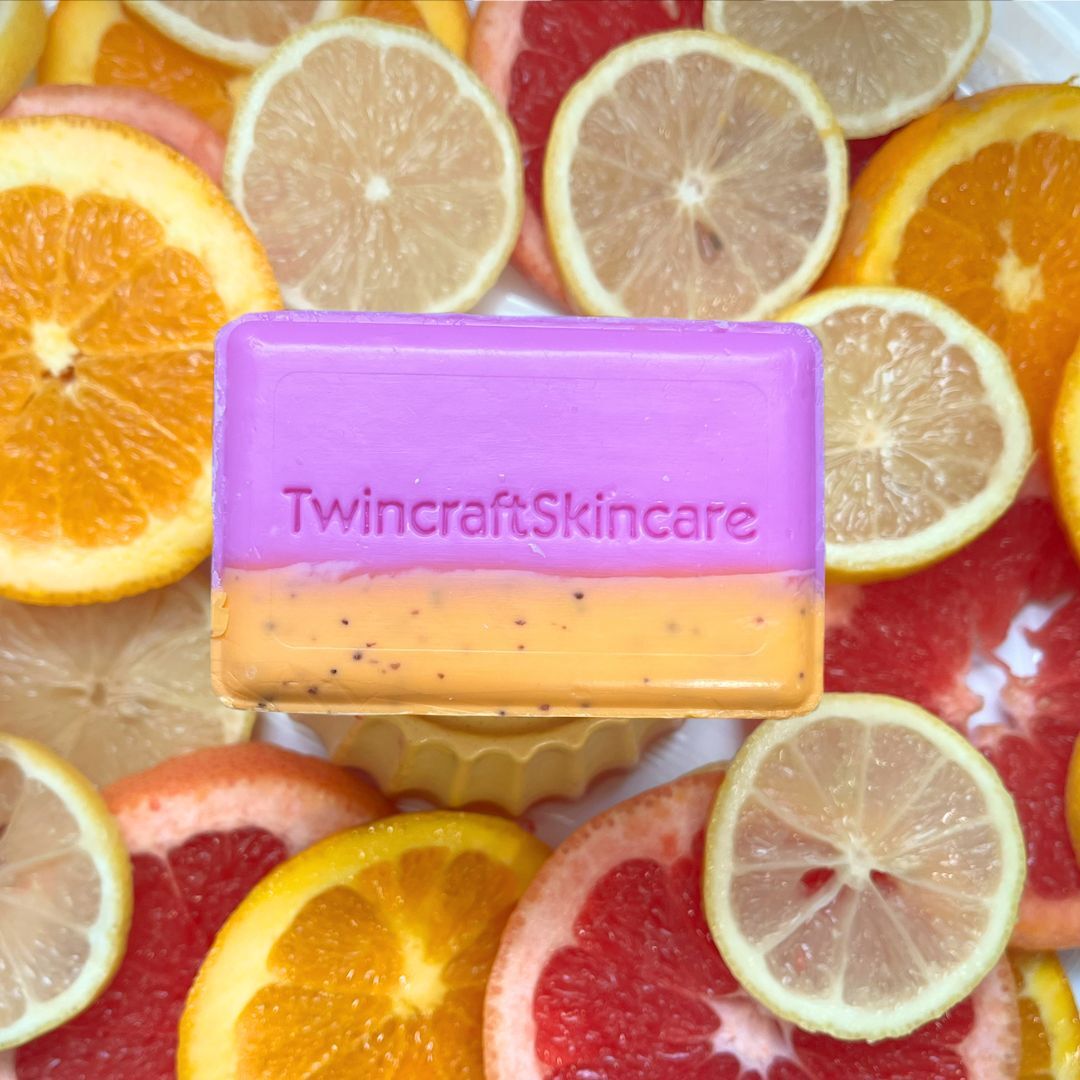Why is there a hole in my deodorant?
Have you ever opened a deodorant stick and noticed an unsightly hole in the center? Fear not, for this is not a sign of an unstable formula. It is simply the result of how evenly (or unevenly) the formula cooled after being filled.
.png?width=318&height=318&name=Untitled%20design%20(15).png) Deodorant sticks are created using a hot pour process where the formula is poured into the component at a high temperature and then allowed to cool and solidify into a solid stick. Sometimes, holes can form as the formula cools. This phenomenon, known as tunneling, is the result of the formula changing density during the cooling process. While tunneling is always a risk with hot pour formulas, variables like packaging choices, fill sizes, and formula composition can impact the likelihood of tunneling.
Deodorant sticks are created using a hot pour process where the formula is poured into the component at a high temperature and then allowed to cool and solidify into a solid stick. Sometimes, holes can form as the formula cools. This phenomenon, known as tunneling, is the result of the formula changing density during the cooling process. While tunneling is always a risk with hot pour formulas, variables like packaging choices, fill sizes, and formula composition can impact the likelihood of tunneling.
Let’s look at the science behind it…
Heating a substance causes the molecules to speed up and spread out. In its heated state, the formula is in liquid form, has a lower density, and takes up a larger volume. As the liquid cools, the molecules slow down and get closer together. If you cool it enough, the molecules become tightly packed into a structured arrangement, and the liquid becomes solid. This cooled state has a higher density and a lower volume than the heated liquid formula. (The exception to this rule is water, which takes up more space in solid form due to the unique structure of water molecules.)

After a hot pour is filled, it is sent through a cooling tunnel to solidify. As it cools, the formula becomes more dense and the volume shrinks. (Note: density and volume are not to be confused with weight. Changes in density and volume do not impact the weight claim on packaging.) In an ideal world, the formula is allowed to cool at a constant rate, so the volume and density changes occur synchronously, resulting in a uniform appearance.
Tunneling happens when the formula is not able to cool evenly, causing the volume and density changes to happen inconsistently throughout the formula.
Variables that impact tunneling
Factors like packaging, fill size, and formula composition can impact the rate and consistency at which the formula cools, and thus affect the likelihood of tunneling. Let’s examine some of these variables…
Plastic vs. Sustainable Packaging
Packaging materials make a big difference in how the formula is able to cool. Think about the difference between putting your coffee in a paper cup versus an insulated mug. Heat is able to escape easily through the paper cup, so your coffee cools down quickly. An insulated mug traps the heat, keeping your coffee hot for hours. The same concept applies to deodorant packaging.

Plastic isn’t a very good insulator, so it allows heat to escape quickly. This makes it ideal for hot pour formulas because the heat from the formula is able to dissipate easily and consistently, so the formula cools evenly and is less prone to tunneling.
Paperboard and aluminum packaging, on the other hand, are more insulating than plastic. So, when the formula is poured into one of these eco-friendly components, the heat isn’t able to escape as easily or consistently. As a result, the outside of the stick cools and sets up quickly due to more direct contact with the cooling tunnel, while the center remains hot and molten for a longer period of time. In this scenario, the outside of the stick has already changed in density and volume, but the center of the stick has not. As the center of the stick cools and becomes more dense, the volume drops, creating a hole or pit in the center of the stick.
Top Fill vs. Bottom Fill
If you’re worried about tunneling, go for a bottom fill component. While it’s impossible to erase all risk of tunneling, bottom fill components do a great job of masking the problem. Because visible changes in volume and density only appear on the top surface, bottom fills conceal any tunneling issues. Once you snap the plug in and flip the component over, any inconsistencies on the surface are now conveniently hidden at the bottom of the stick.
Conversely, top fill components don’t offer any option to hide tunneling, so you should expect to see some inconsistencies on the surface. However, there are some options available to help reduce the appearance of tunneling, such as adjusting the temperature of the cooling tunnel or using a re-melter to smooth out the surface. If this is something you’d like to explore, your account team can help walk you through the options.
Fill Sizes
The size of the product has a big impact on how evenly the formula cools. Small fill sizes and narrow components are prone to tunneling because the ratio of surface area to total volume is high, and surfaces cool quickly. This means that the outside of the stick cools rapidly and doesn’t give the center of the stick a chance to set up. Larger fill sizes with wider diameters allow the heat to disperse more evenly, so the outside of the stick and the center of the stick cool at a more consistent rate. And as we’ve identified, consistent cooling reduces the risk of tunneling.
Formula Composition
Finally, ingredient choices can also impact tunneling. Hot pour formulas rely on waxes to create a structured stick, and not all wax structures are created equal. Some waxes, like ozokerite wax, experience minimal changes in density as they cool. This type of wax structure is less prone to tunneling because the formula does not shrink dramatically as it solidifies. Other waxes, like candelilla wax, undergo more significant changes in density as they cool. This type of wax structure often results in tunneling because of the considerable change in density and volume.
Final Thoughts
All in all, tunneling is merely an aesthetic issue – and one that can usually be resolved by choosing packaging to mitigate the risks. If you’re looking to avoid tunneling altogether, your account team can help guide you to a low-risk solution. If you’re looking to go plastic-free, you may need to make peace with a bit of tunneling, as we experience tunneling most often with sustainable packaging, such as top fill paperboard components. Either way, our team is here to help guide you to the right decisions for your brand and ensure that you are delivering a thoughtful, high-quality product to your customers.
To learn more about hot pour products, reach out to our sales team!






